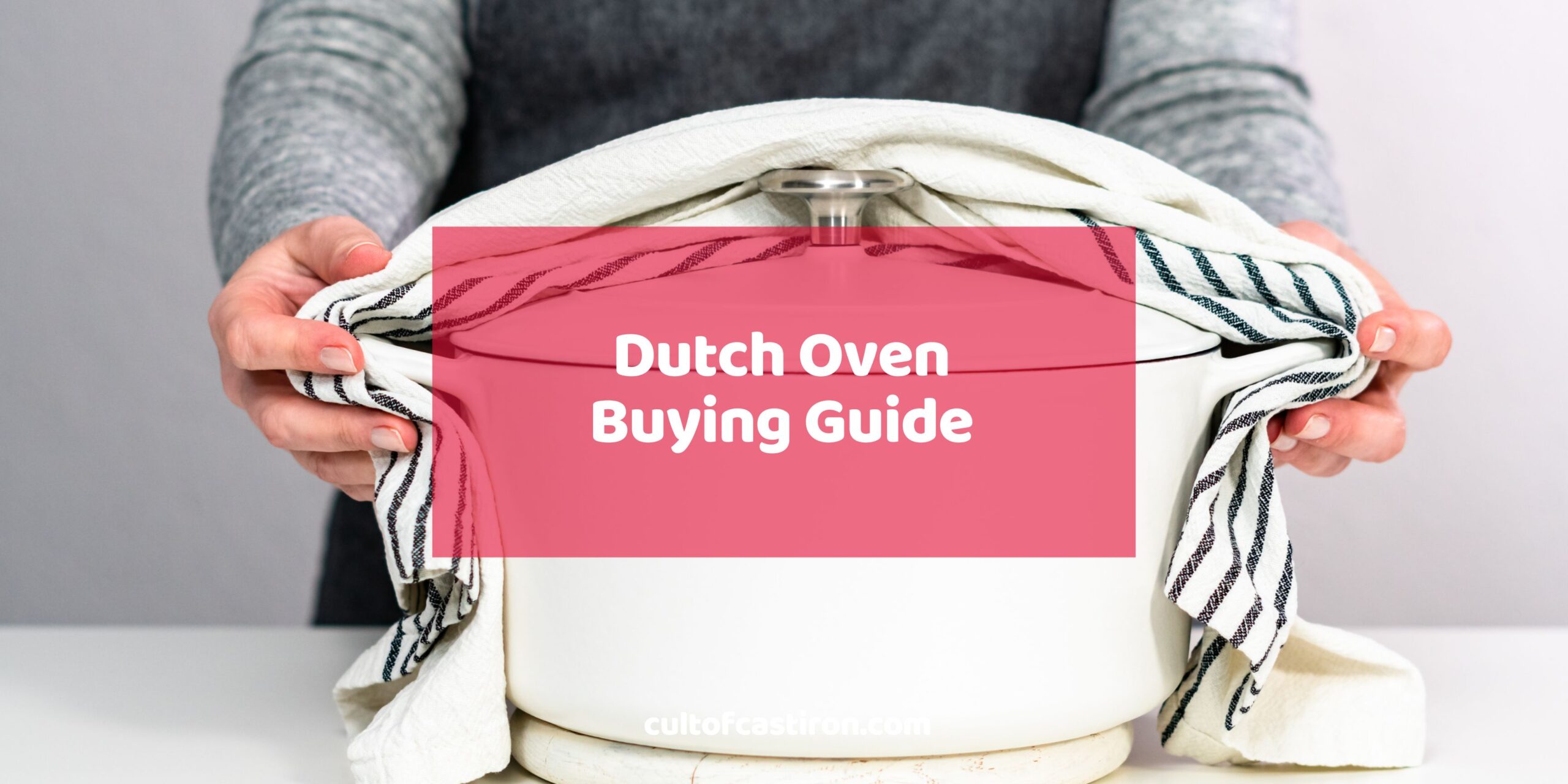Looking to spice up your cooking arsenal? If there’s one piece of cookware that shouldn’t fly under your radar, it would have to be the Dutch Oven. As the Swiss army knife of cooking, this kitchen tool is a workhorse because it can take on any kind of cooking job. Whether you’re baking bread, recreating your mom’s signature stew, or preparing popcorn for movie night, this gem of a kitchen tool will get things done.
Aside from being an all-in-one kitchen tool, Dutch Ovens are also popular for their aesthetic appeal. Getting a high-quality piece won’t just add a unique charm to your dishes but will elevate the feel of your kitchen as a whole. But before you head out shopping, it’ll be best if you get a full picture of what Dutch Ovens can bring to the table.
In this guide, we’ll tell you everything you need to know about Dutch Ovens starting from its history up to the factors you need to consider when getting one!
What is a Dutch Oven?
A Dutch oven is basically a heavy-duty pot that comes with a tight-fitting lid. It’s made from cast iron which gives it the ability to effectively distribute and retain heat over a long time. This kitchen tool specializes in dishes that require slow-cooking and braising but it can also be used to bake, roast, simmer, or fry, making it a staple for all chefs.
The origins of the Dutch Oven can be traced back to 17th century Europe. During this time, the Dutch were known to be excellent craftsmen and they would make use of sand molds to shape copper and brass into pots.
During his travels, an Englishman by the name of Abraham Darby saw craftsmen make use of this method and was inspired to test it out. Since copper and brass at that time were expensive, he felt that there was a need to create a more affordable type of pot. This inspired him to test out the Dutch’s technique with iron and after a lot of trial and error he was eventually able to succeed. His process allowed him to make a pot that was a lot cheaper, and its affordability caused a huge surge in demand.
As the Dutch oven grew in popularity, manufacturers from all over Europe were compelled to make their own versions. Due to the nature of their cuisine, the kitchen tool was particularly popular among the French and so it quickly became associated with them. Because of this, other popular names for Dutch ovens include “French Oven” and the “Cocotte”, which means “casserole” in French.
What is a Dutch Oven Used For?
Technically speaking, Dutch Ovens can be used for any cooking method. Enameled Dutch Ovens can go in stoves and ovens while bare cast iron Dutch ovens can go in stoves, ovens, and also over coals. Here’s a quick list of what the Dutch Oven can be used for:
Baking
Dutch ovens create an enclosed and evenly heated space, making it perfect for baking bread, cake, and other pastries.
Boiling
Dutch ovens can boil dishes efficiently due to its heat retention capabilities. This is precisely the reason why they’re a go-to for cooking pasta or soup.
Deep Frying
The size, shape, and depth of Dutch Ovens enables users to place large volumes of oil. Paired with its heat distribution capabilities, this ensures efficient and equal deep frying.
Roasting
Dutch ovens, when left uncovered in an oven, are a great alternative to roasting pans. Better yet, Dutch ovens also make a great vessel for immersion blending, which means that you can make sauces or purees without having to transfer the roasted vegetables into another container.
Searing
Similar to cast iron pans, Dutch Ovens have a high heat capacity, which means that it can be used to sear meats and vegetables before stewing. While you can technically sear a steak with a Dutch oven, its high walls may make flipping impractical. With that said, the “Double Dutch” configuration (more on this in the next section) with its completely flat lid can be used as an alternative to traditional cast iron skillets.
Slow Cooking
Arguably, this is what the Dutch oven is made for. Before crock pots and pressure cookers, Dutch ovens were the go-to cookware for slow cooking techniques like stewing, braising, and tenderizing meat. Apart from its great heat retention capabilities, its tight-fitting lid also plays an important role in its slow cooking prowess, as it ensures that moisture is retained throughout the cooking process, keeping meats tender.
Stock and Broth Making
Dutch ovens can be used to make stocks and broths in the absence of a stock pot. However, make sure to limit the amount of liquids to be used for the broth, as Dutch ovens are not as deep as stock pots.
Additionally, Dutch Ovens are beautiful pieces of kitchenware that could also be used for food presentation purposes. Instead of finding another pot for plating, you can immediately transfer the pot from stove to table. Thanks to their beautiful and eye-catching build, serving meals in one will add to its appeal.
Types of Dutch Ovens
Dutch Ovens can come in different variations. Each type hosts certain features that make them suitable for different types of chefs. If you’re planning to purchase a piece or two, it’s best to know what type is perfect for you.
Non-Enameled (Camp Dutch Oven)
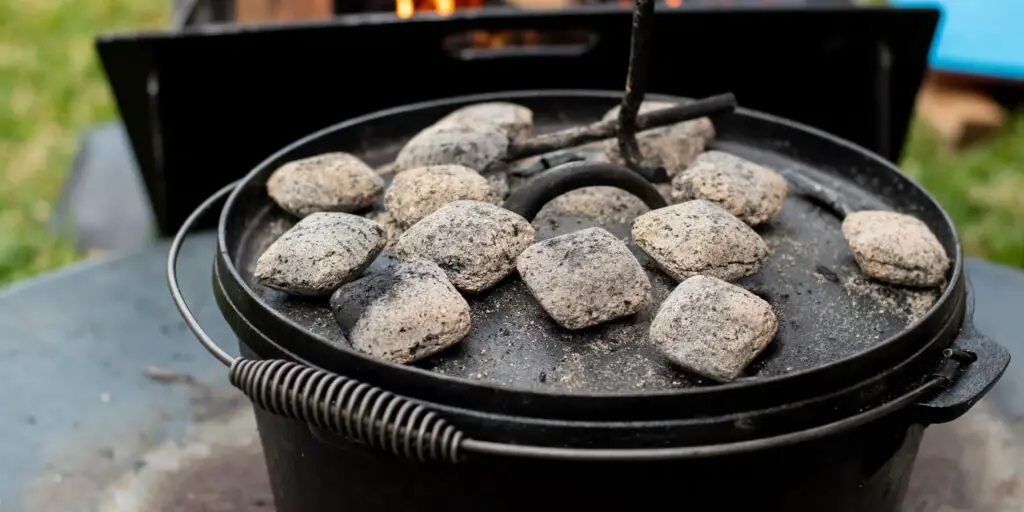
Camp Dutch Ovens are perfect for cooks who love the great outdoors. This type of Dutch Oven is designed to accommodate open fires and coals so they are built with legs on the bottom and a sturdy handle. To guarantee even cooking, some variations may come with a lipped lid that can allow cooks to place coals on top.
Enameled Dutch Oven
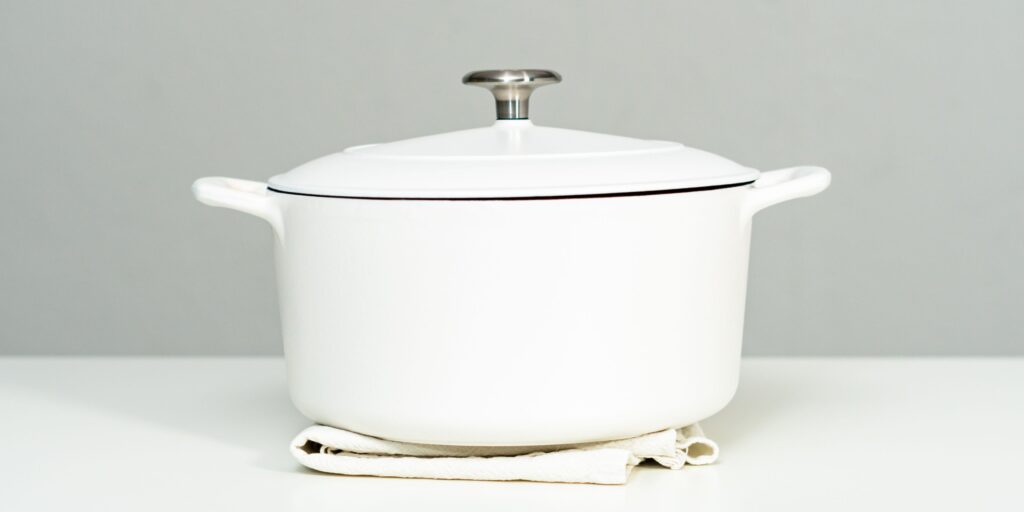
Enameled Dutch Ovens are the better option for home cooks for several reasons. They’re coated with a glass like material which paves the way for easy use, cleaning, and maintenance. In addition to being versatile and stylish, you won’t have to worry about seasoning and other rust-related issues.
Double Dutch Oven
A Double Dutch oven (sometimes called a 2-in-1 Dutch oven) is a variation of the classic design wherein the knobbed lid is swapped for a knob-less dual-handled pan. Apart from its function as a lid, you can also use this as a separate vessel for cooking.
Dutch Oven Alternatives
There are also some other types of cookware that offer similar functions as a Dutch oven, but with a different design. Here are some of them.
Braiser
As the name suggests, braisers specialize in dishes that require braising. It can be dubbed as an in-between of a cast-iron pan and a Dutch Oven since it is not as tall, and it has highly sloped sides and a wider base. It’s also less bulky and cumbersome as Dutch ovens, which makes them slightly better for table presentation.
Potjie
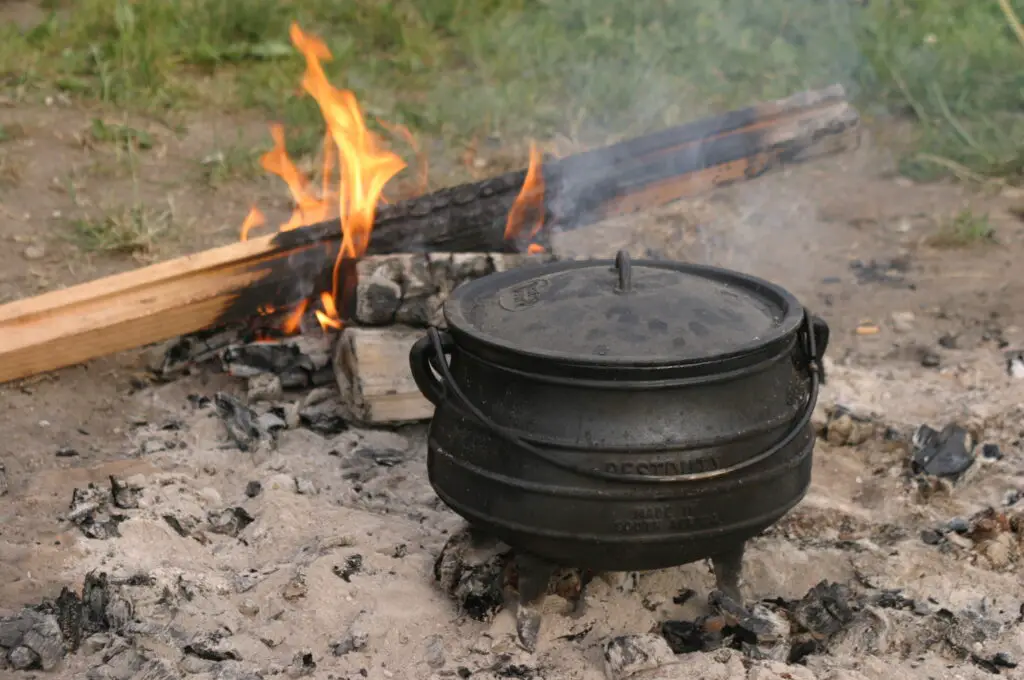
Derived from the Afrikaan word “little pot”, Potjies are cauldron-like tools that specialize in cooking hearty stews. These pots usually have three legs and a round bellied shape which makes them the perfect choice for cooking in an open fire.
Sauteuse
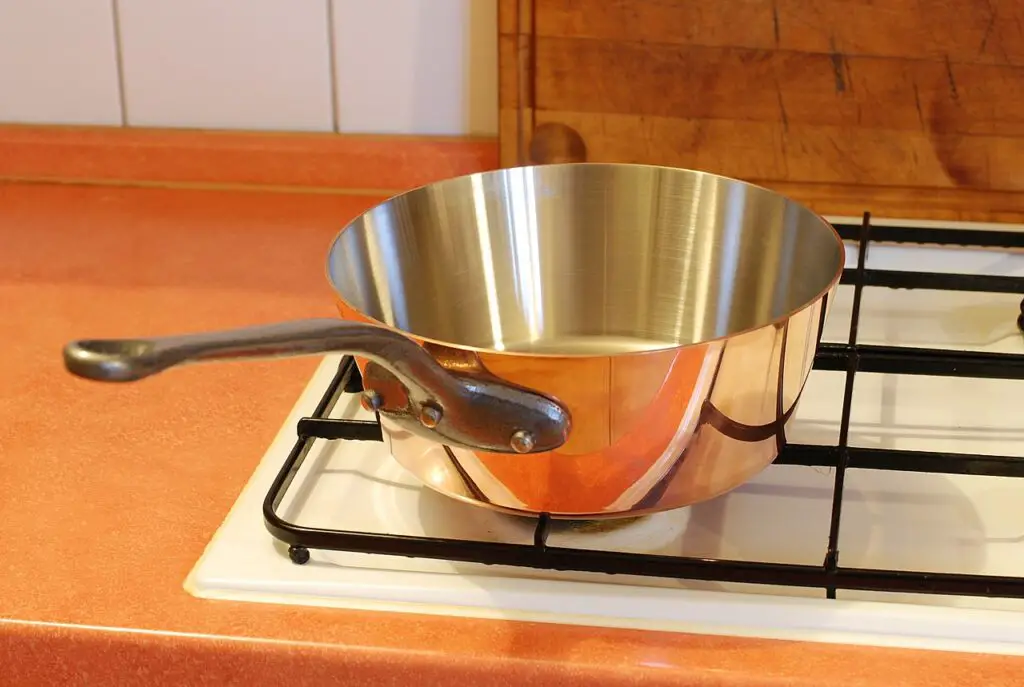
Essentially, a sauteuse is a type of cookware that resembles a deep skillet but with a lid of some sort. Apart from sauteing and frying, it can also be used for slow cooking techniques. However, they are mostly made from stainless steel, and not cast iron.
Dutch Oven Buying Guide
When buying kitchenware, quality should be the top priority. There’s no denying that Dutch Ovens can be quite pricey but given its different uses they’re definitely a worthy investment. As you start shopping, it’s important to look beyond the price tag since buying cheap or low quality means that you’re more likely to replace your purchase more frequently. Here are the factors you need to consider as you canvass for different options.
Finish
When it comes to your Dutch Oven’s finish, you just have to recall our comparison with Non-Enameled and Enameled variants. Enameled variants typically offer more convenience since you don’t have to season them regularly. But on the contrary, non-enameled pieces are better for outdoor cooks since they are much more durable.
Size
Selecting the right pot size will primarily depend on your needs. Consider the following questions during your shopping spree:
- Are you going to cook for everyday use or will you use it to serve guests for a party?
- If you’re using it for daily use, how many people do you usually cook for?
- If you’re using it for a party, how many guests will you have?
- What kind of dish are you going to prepare?
- Are you going to cook soup?
- Will you bake a cake?
A general rule to follow is 1 quart for 1 person. Consider this size chart as you compare and contrast options:
Dutch Oven Size Chart
| Quartz | Servings |
| < 1.0 | Best for side dishes or individual servings |
| 1.0 – 2.0 | 1 – 2 people |
| 3.0 – 4.0 | 2 – 4 people |
| 5.0 – 6.0 | 4 – 6 people |
| 7.0 – 8.0 | 6 – 8 people |
| 9.0 – 12.0 + | 8+ people |
This table should give you an idea of what to buy but remember that you don’t need to stick to these measurements religiously. If you like batch cooking or preparing meals in advance, then you can opt for a size bigger to accommodate the volume. If you like to host parties, you shouldn’t just limit yourself to a big pot. Conversely, you can purchase a lot of small Dutch Ovens so each guest you host will have their meals served in pretty little containers.
Features
While Dutch ovens across all brands share similar shapes and sizes, some have more bells and whistles than others. Here are a few features that Dutch ovens may have:
1. Legs
Some Dutch Ovens may have some legs casted into their general shape. Those that have legs are usually the non-enameled variants since they’ll be used to cook over coal and fire. Conversely, enameled variants don’t have legs since they’ll be used over stovetops and ovens.
2. Lid Tops
Dutch Ovens may come with different lid tops to suit different cooking styles and preferences.
- Knobbed Lids – The standard variant. They are dome shaped and have a small handle placed on the center.
- Lipped Lids – Usually paired with non-enameled Dutch Ovens. They have a surface that allows cooks to place coals over the top of the lid ensuring equal heat distribution.
- Flat Lids – A lid with a flat shape that is parallel to the rim of the pot. When flipped over, the flat lid provides an extra surface and serves as an extra girdle. As stated earlier, this only comes in the Double Dutch oven configuration.
3. Lid Spikes
Some Dutch Ovens may contain some spikes that are located on the bottom of their lids. These spikes are strategically placed so that when liquids of what you’re cooking condense they will automatically fall back into your dish. These drip points automatically baste what you’re cooking, enhancing its flavor with minimal effort.
While these spikes are not a 100% necessity to conduct slow cooking, they are a nice-to-have feature for most Dutch ovens. Note that the lids of Double Dutch ovens do not have these spikes as the underside of its lid needs to be smooth to be used as a cooking surface.
4. Coiled Handles
Dutch Ovens can be difficult to maneuver because of their sheer weight and heat. In the case of people who have weaker wrists, this can mean difficulties when transferring dishes. The coiled handle makes it easier for users to lift and transport the pot safely.
5. Price Range
There’s no denying that Dutch Ovens can be expensive. It’s a natural tendency for shoppers to go for cheaper pieces since they can already do an okay job. However, this is a different case for enameled variants since the quality of theircoating may be inconsistent.
For example, some lower quality pieces may have areas such as the rims that aren’t properly coated with enamel. Over time, this may result in rusting, which can lead to the enamel chipping over time.
At the end of the day, you get what you pay for so it’s best to stick with proven brands like Le Creuset or Staub. Even though they’ve outsourced some of their manufacturing processes to China, their brand still adheres to strict quality control procedures and is kind enough to provide warranty.
6. Warranty
As mentioned previously, one important factor that should come into play would be warranty. Established brands such as Staub and Le Creuset have a lifetime warranty on their products so in case you have any defects or damages you can contact them easily for replacement.
Now, over to you!
Choosing which Dutch oven to buy is both easy and hard. More affordable pieces get the job done for half the cost, while the more premium products are fit to be heirloom pieces someday. Whichever you choose, you’ll surely enjoy cooking a big batch of sweet or savory food for your family and guests.
If you’re eager to level up your Dutch Oven and cast iron cooking game, look no further than the Cult of Cast Iron! We’ve got all the tricks, handy tips, and practical advice to turn you into a cast iron master. Need a review, a guide, or the hottest recommendations? We’ve got your back! Explore our blog and join the Cult of Cast Iron today!

Miguel is a cast iron enthusiast from Cavite, Philippines. He works in the digital marketing field as a content marketing strategist. On the side, he manages a small online bookstore and tends to his plants.

